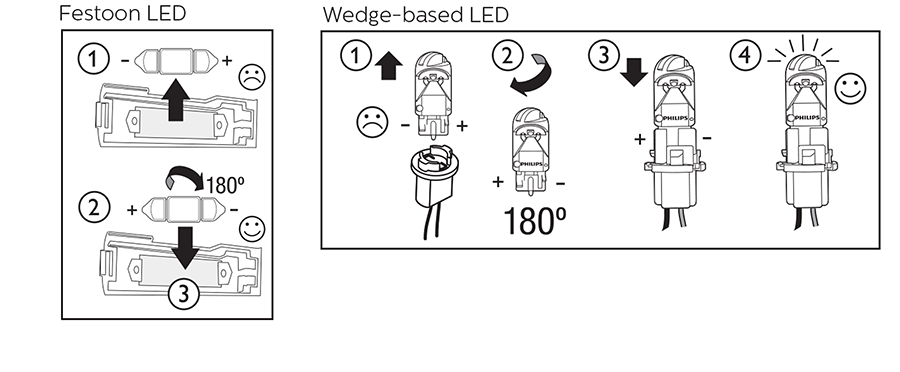LED lights have special installation requirements:
Regular incandescent miniature bulbs can draw current in either direction – there are no ‘positive’ or ‘negative’ terminals. Incandescents will work regardless of which direction they're inserted.
Like batteries, LED only draw current in one direction – if the light is installed with the positive terminal touching the negative side of the socket, the LED won’t light up. Fortunately, Philips LEDs include circuitry that protects them from damage, even if they are installed incorrectly.
If a Philips LED light won't light up, the fix is easy:
- Remove the LED from the socket.
- Flip the LED 180°.
- Insert the LED back into the socket.
- Check to ensure the LED lights up.
- Do not force the LED or alter the socket.
- Be sure that you have the right LED for your application.
